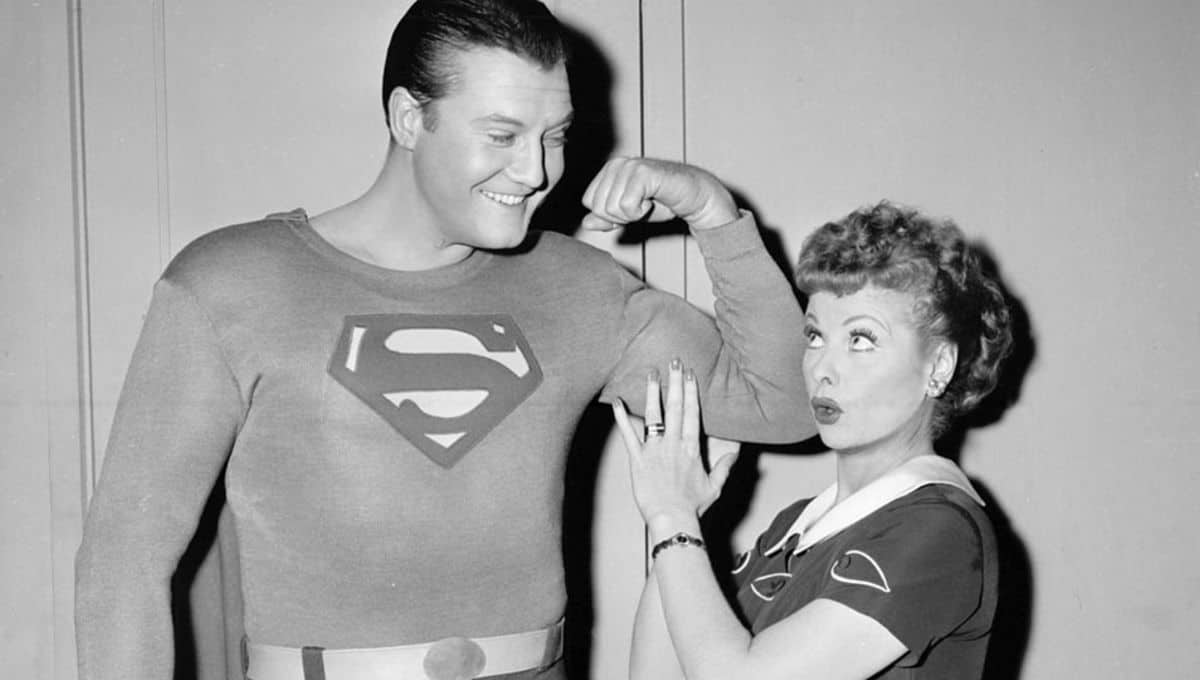Superman first appeared in April, 1938, in a comic magazine titled Action Comics, dated on its cover as June of that year. He was the creation of Cleveland, Ohio high school friends Joe Shuster and Jerry Siegel. The latter wrote and self-published science fiction stories, often illustrated with drawings from Shuster. During the 1930s the two made several attempts to break into the comic strip market, but their youth and inexperience proved daunting obstacles.
Shuster left the partnership after learning his friend had been soliciting published artists to illustrate his evolving character then titled The Superman. Eventually, they reconciled. By then Siegel had much of the backstory for his new character in place, though it continued to change before Superman appeared before the public.

Since that first issue of Action Comics #1, Superman has continued to evolve. By the 1980s he was the most popular star of the Superheroes genre he created. Superman appeared in films, both live-action and animated, on television in the same manner, on radio, in comic books, games, dolls, lunchboxes, in artwork, in dishware, toys, and in all manner of public consumption.
He, and the characters who gradually appeared to be associated with him, both evil and good, are part of life for now over eight decades. Superman and his alter-ego, mild-mannered reporter Clark Kent, have been a domineering part of American culture since just before World War II. Today he is no longer the reigning king of comic superheroes, though his popularity remains high. Here is the story of Superman, including some revelations which may surprise some readers.
1. Superman’s powers evolved over time

When Superman first appeared he did not possess heat-ray vision. Nor could be fly. He leaped over buildings rather than soar over them. He could not travel backward through time, nor into the future. Superman could not “breathe” in space. He discovered his superpowers gradually, growing up on a small midwestern farm after being transported from his home planet by a spaceship devised by his father on the planet Krypton. In Superman’s original backstory he does not exist as Superboy, and does not decide to use his powers for the benefit of mankind until after the deaths of his adoptive parents. His name, Clark Kent, was selected, according to Shuster, from the names of actors Clark Gable and Kent Taylor. The latter actor was a major star of what was then called “B” movies, low-cost productions often shown in double features.
Superman’s powers expanded, in part, to keep him on top as more superheroes entered the comic book market. Before 1941, Batman, Captain Marvel, Green Lantern, Wonder Woman, the Flash, and several others appeared, competing with readers and each other in their various stories as the greatest of the superheroes. In 1940, Superman appeared on radio, beginning on New York City’s WOR as The Adventures of Superman. Superman was voiced by Bud Collyer, who later gained fame as the host of a long-running game show, To Tell the Truth. Collyer, whose role as Superman/Clark Kent was kept secret for several years, shifted the tenor of his voice when uttering the line, “This looks like a job for Superman”. The line appeared at least once in every broadcast, and signified Clark shifting to his appearance as Superman to the listening audience.

